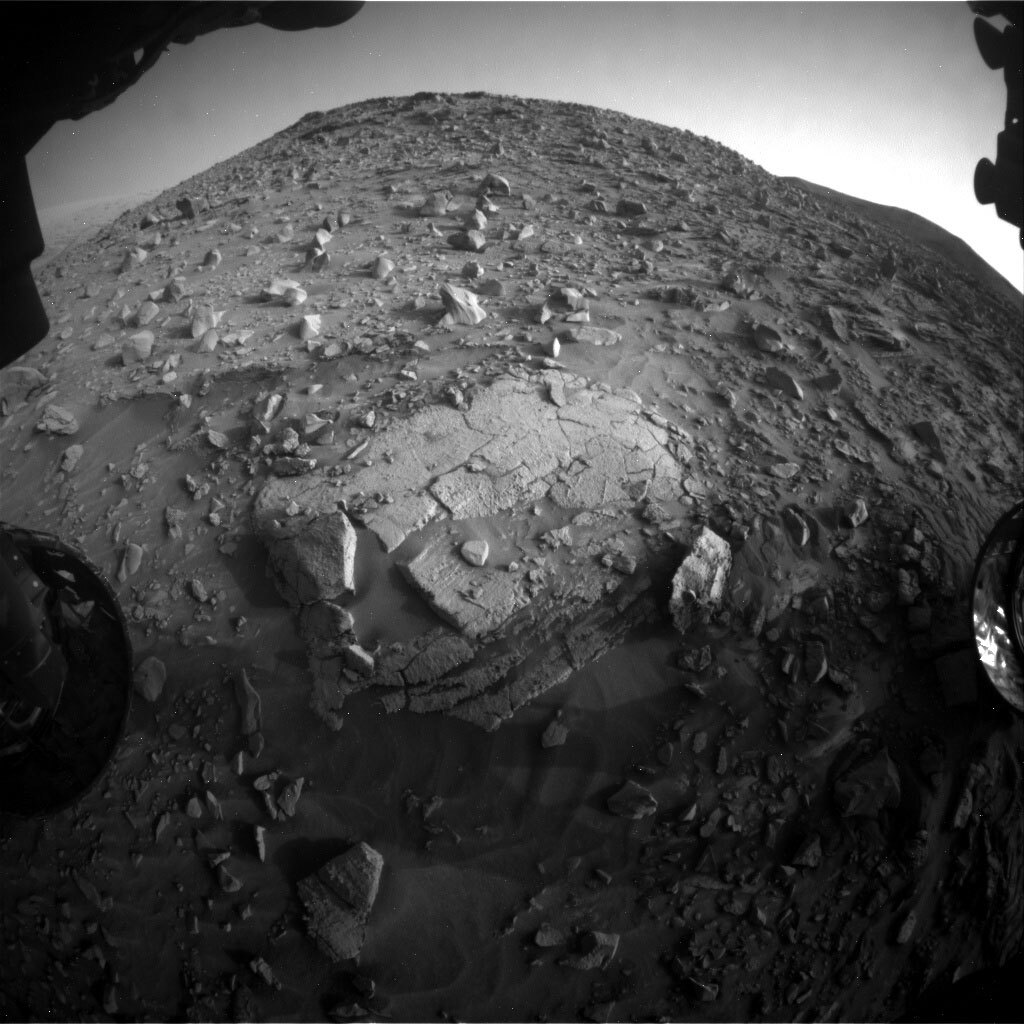3 min read

Not that it matters… but exactly 100 sols ago, on January 7th, we were planning sols 3351 and 3352… and it was this blogger’s turn to report on what was happening. Apparently, we were marvelling at the landscape – and dealing with a rock under the foot, well, the wheel. Tosol, we were again dealing with a rock right under the rover, but this time, we were excited about it as the rover was in a stable position parked on a big piece of bedrock, presenting itself flat as a pancake, ready to be brushed and analysed. But there was a problem that required discussion... Tosol’s plan was originally a ‘touch-and-go’ sol, where we put the APXS down for a short integration before we drive away. Those ‘touch-and-go’ measurements return brilliant analysis throughout most of the Martian seasons, but right now we are in a warm season, and that means it’s too warm for really good data at the time those ‘touch-and-go’ measurements are happening. Therefore the science team discussed carefully how important the target is, and if it warrants us to stay in place to get the APXS measurement at a colder time of the day, and therefore get the best possible data quality. Once again, rover progress had to be weighed against the importance of the data. We decided the diversity of the region and the quality of the targets, together with the hypothesis on the different rock types and their formation we can test here, warrants us to stay.
As a result there is a plethora of science activities in the plan, and the team are looking forward to have another data feast over the weekend… and of course to seeing the data. Here are the details:
APXS and MAHLI have two and three activities, respectively. The pancake-shaped rock the rover is parked on will be brushed and investigated with APXS and MAHLI on a target called ‘Shandon.’ APXS and MAHLI are also investigating the edge of the bedrock on a target called ‘Nesting,’ which is at the edge of the big, flat rock and allows side-on view. Finally, MAHLI is looking at ‘Rumblings,’ which is a curiously bright and textured target that the team thinks might be alteration features and would like to know more about. Tosol’s MAHLI will likely also allow for APXS in a future plan, despite the targets being a bit spikey. The MAHLI images will show, if we can get APXS to touch in a safe way, but of course, MAHLI images are always welcome science data, too, especially on textured targets like this one.
ChemCam is investigating two targets, ‘Tonga,’ which is on the bedrock and ‘Kirby Lonsdale,’ a vein target. Mastcam is taking documentation images of the two ChemCam targets and doing a multispectral investigation on the brushed area. More Mastcam images are planned in form of a 16x4 mosaic on the target ‘Onich Dry Gorge,’ which was imaged from a distance and we are now getting much higher resolution images from a closer distance. ChemCam is adding to the images through a long distance RMI and an RMI of rocks broken up by the rover wheels. Lots of data and images, and more to come over the weekend at this interesting location.
Written by Susanne Schwenzer, Planetary Geologist at The Open University







